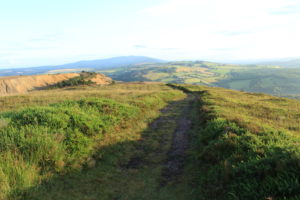Mining played an important role in the history of Avoca. Today the remains of seven engine houses, a mineral tramway arch with a colourful mine landscape containing precipitation ponds and spoilheaps from the different eras still exist here.
The Avoca mines thrived for centuries. Cartographers for the Greek geographer Ptolomy, who mapped Ireland in 150 AD indicated the location of Avoca (then spelt Oboka) and it is thought that the Romans traded ore with this valley.
Note: The Avoca mine site, which closed in 1982, contains numerous public hazards. The site consists of openings into old unsafe underground mine workings. These, along with open pits with steep high walls, water bodies and spoil piles with elevated metals, present a hazard to the public. This site should not be accessed by the public and there are many signs pointing this out which should be observed.















